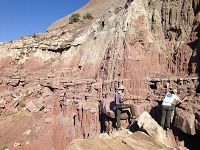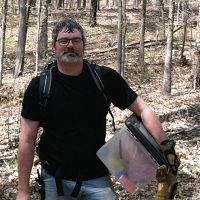EOS: Taking the Pulse of the Earth’s Surface Systems
04 Dec 2015
News Source: EOS
Taking the Pulse of the Earth's Surface Systems
In September of 2014, Laurel Larsen (UC Berkley), Elizabeth Hajek (Penn State), and others from the Earth surface process community were tasked with how a targeted investment of research and infrastructure could quantify a baseline or monitor effects that anthropogenic influence has on the critical zone. The group proposes a 10-year Earth Surface Observatory initiative consisting of four phases to capture the past, present and future pulse of the Earth’s surface systems.
The “proposed Earth Rover campaign spans all of the United States’ 25 physiographic provinces, with urban, rural, and agricultural sites (about 75 sites total). This campaign will yield information about the relevant geologic, geophysical, geochemical, hydrologic, and biotic properties and the deep history of the critical zone. Within each physiographic province, we will choose sites on the basis of geology and vegetation, leveraging efforts at existing long-term observatories.”
The authors ask for feedback on how their proposed initiative would be best integrated into the Critical Zone Observatories and other programs such as Earth Cube. To leave feedback and to read the full story >> click here.
News Source:
READ MORE from EOS >>
News Category:
RESEARCH |
INFRASTRUCTURE |
DATA |
MODELS
People Involved
CZO
-
National, ADVISORY BOARD
-
National, ADVISORY BOARD
-
Boulder, Calhoun, Eel, Reynolds, Sierra, COLLABORATOR
-
Boulder, Shale Hills, INVESTIGATOR
Explore Further





